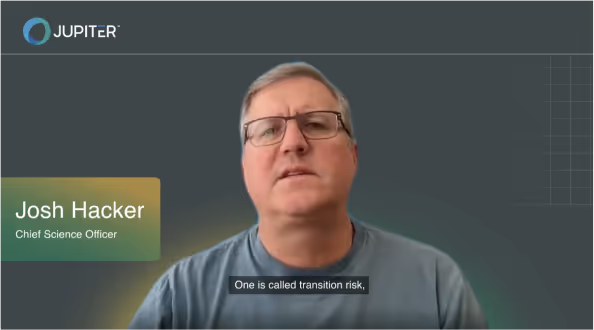Transcript
When we think about climate risk, we typically think about it in two buckets. One is called transition risk and these are business risks in transitioning your company to a green economy going forward. The other bucket is physical climate risk. And that’s where we at Jupiter focus our attention on. And in this kind of (physical) risk, a key input to risk analysis are physical hazards. These are hazards that might impact things like damage to your business infrastructure. If you're a utility, it could be transformers or distribution lines. Or if you’re in industry, it could be a literal facility or a logistical part of your supply chain. There are other kinds of physical risks that arise from the physical hazards. And those could be things like business interruption, as an example, or again supply chain disruption.
There are a number of ways that the physical world, really the environment, impacts risk to any business. And when we are talking about climate, we are really focused on businesses that intend to have a lifetime. Most corporations in the world, whether it’s industrial or financial, are really focused on a long lifetime. They are planning not just for today and tomorrow, but even decades in many cases. So when we analyze physical climate risk, the weather seems to be a natural thing we think about because the weather is responsible for things like drought that can cause agricultural damage or water resource supply problems. Or things like hurricanes or thunderstorms that can cause real physical damage from flooding or winds. And that’s great if we only care about the risk today or tomorrow or next week, but if we want to think about physical climate risks over the lifetime of a business operations and assets, we have to take into account the climate. And that’s because it’s changing. The weather – thunderstorms, tropical cyclones, hurricanes, winds, wildfires – that are partially caused by that are different from what they were 10 to 20 years ago. And they are different now from what they will be in 10-20 years. And so we have to factor in the climate and then how that weather layers on top of it and is changing during the lifetime of a business decision to really deal with physical climate risk. So I hope that helps answer the question between physical and transition risk. I’ll look forward to seeing you next time.
.webp)


